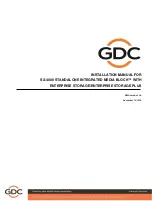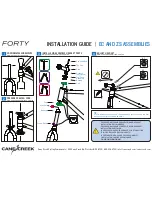
27
overloading front to back and side to side. Heavy items should be placed
low and as close to the axle positions as reasonable. Too many items on
one side may overload a tire. The best way to know the actual weight of
the vehicle is to weigh it at a public scale. Talk to your RV dealer to
discuss the weighing methods needed to capture the various weights
related to the RV. This would include weights for the following: axles,
wheels, hitch, and total weight.
How Overloading Affects Your RV and Tires
The results of overloading can have serious consequences for passenger
safety. Too much weight on your vehicle’s suspension system can cause
spring, shock absorber, brake failure, handling or steering problems,
irregular tire wear, tire failure or other damage.
An overloaded vehicle is hard to drive and hard to stop. In cases of
serious overloading, brakes can fail completely, particularly on steep hills.
The load a tire will carry safely is a combination of the size of tire, its load
range, and corresponding inflation pressure.
Excessive loads and/or under inflation cause tire overloading and, as a
result, abnormal tire flexing occurs. This situation can generate an
excessive amount of heat within the tire. Excessive heat may lead to tire
failure.
It is the air pressure that enables a tire to support the load, so proper
inflation is critical. Since RVs can be configured and loaded in many
ways, air pressures must be determined from actual loads (determined
by weighing) and taken from the load and inflation tables provided by the
tire manufacturer. These air pressures may differ from those found on the
certification label. However, they should never exceed the tire limitation
for load or air pressure. If you discover that your tires cannot support the
actual weights, the weight of load will need to be reduced.
NOTE:
Tires are warranted by the manufacturer of their respective brand
and are to be serviced and warranted by a service center. Contact your
dealer for information on service centers for tires.
How to Change a Tire
1. Place blocking under main rail of frame with hydraulic jack on
top of blocking in front of front spring hanger, ALWAYS on main
rail.
2. Break lug nuts loose before raising coach. DO NOT remove
nuts.
3. Raise coach with jack until wheel is off the ground.
4. Place additional blocking under frame for security support. DO
NOT depend on jack alone.
5. Be sure coach is solid and will not move with tire and wheel off.
6. Remove lug nuts when tire is off the ground.
















































